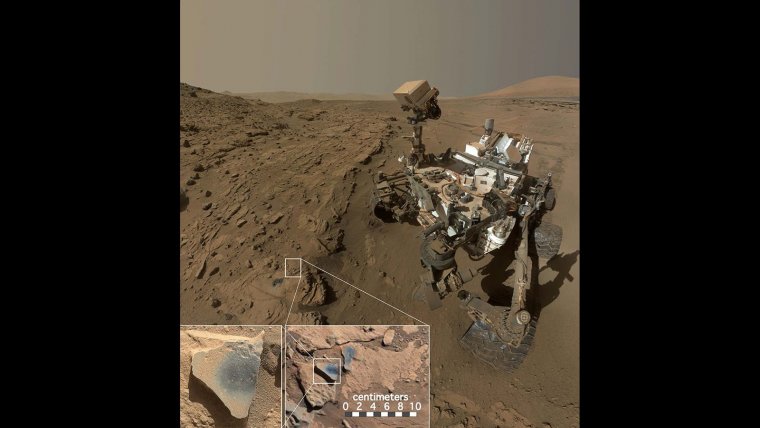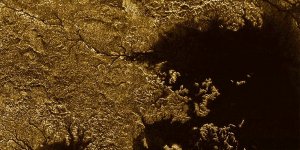| News / Space News |
NASA Rover Findings Point to a More Earth-like Martian Past
NASA | JUNE 28, 2016
Chemicals found in Martian rocks by NASA's Curiosity Mars rover suggest the Red Planet once had more oxygen in its atmosphere than it does now.

This scene shows NASA's Curiosity Mars rover at a location called "Windjana". ![]()
Researchers found high levels of manganese oxides by using a laser-firing instrument on the rover. This hint of more oxygen in Mars' early atmosphere adds to other Curiosity findings -- such as evidence about ancient lakes -- revealing how Earth-like our neighboring planet once was.
This research also adds important context to other clues about atmospheric oxygen in Mars' past. The manganese oxides were found in mineral veins within a geological setting the Curiosity mission has placed in a timeline of ancient environmental conditions. From that context, the higher oxygen level can be linked to a time when groundwater was present in the rover's Gale Crater study area.
"The only ways on Earth that we know how to make these manganese materials involve atmospheric oxygen or microbes," said Nina Lanza, a planetary scientist at Los Alamos National Laboratory in New Mexico.
Microbes seem far-fetched at this point, but the other alternative -- that the Martian atmosphere contained more oxygen in the past than it does now -- seems possible.
In Earth's geological record, the appearance of high concentrations of manganese oxide minerals is an important marker of a major shift in our atmosphere's composition, from relatively low oxygen abundances to the oxygen-rich atmosphere we see today. The presence of the same types of materials on Mars suggests that oxygen levels rose there, too, before declining to their present values. If that's the case, how was that oxygen-rich environment formed?
One potential way that oxygen could have gotten into the Martian atmosphere is from the breakdown of water when Mars was losing its magnetic field. without a protective magnetic field to shield the surface, ionizing radiation started splitting water molecules into hydrogen and oxygen.
Because of Mars' relatively low gravity, the planet wasn't able to hold onto the very light hydrogen atoms, but the heavier oxygen atoms remained behind. Much of this oxygen went into rocks, leading to the rusty red dust that covers the surface today. While Mars' famous red iron oxides require only a mildly oxidizing environment to form, manganese oxides require a strongly oxidizing environment, more so than previously known for Mars.
YOU MAY ALSO LIKE




